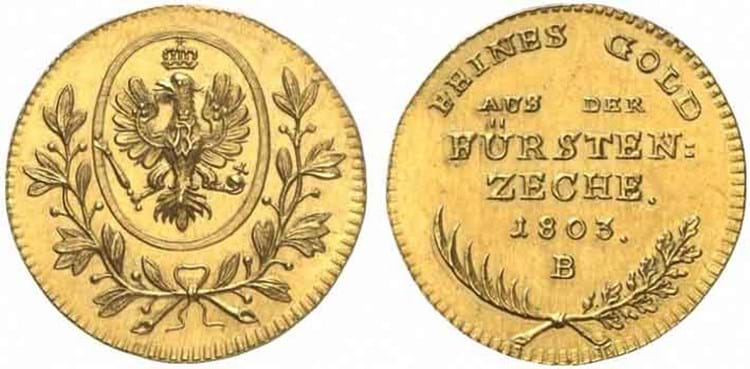
There are only two known examples, one of which is in a Berlin museum, so it was no surprise that there was considerable pre-sale buzz when coin specialist Künker in Osnabrück offered the other one in his June 18-22 sale with an estimate of €75,000.
It came from the remarkable collection of Carl Vogel (1923-2006), a Hamburg academic and one-time president of the University of Fine Arts, that contained almost every German coin issued between 1806 and 1871.
The ducat was coined under King Frederick William III (1770-1840) and is adorned with the arms of the Prussian royal family. The inscription on the reverse gives an exact description of the origin of the gold used - "Reines Gold aus der Fürstenzeche" (Pure gold from the princely mine).
It came from the appropriately named Bavarian town of Goldkronach. Although gold and silver had been mined there since the 14th century, many of the mines had fallen into disrepair.
There was a short-lived revival after the town came under Prussian jurisdiction in 1792, but the quantities found remained very small, and in the 1920s gold-mining was finally abandoned there.
The bidding started at €80,000 and advanced rapidly and after a very short time a telephone bidder saw off the international competition with his offer of €160,000 (£125,760).
The buyer's premium was 15%




